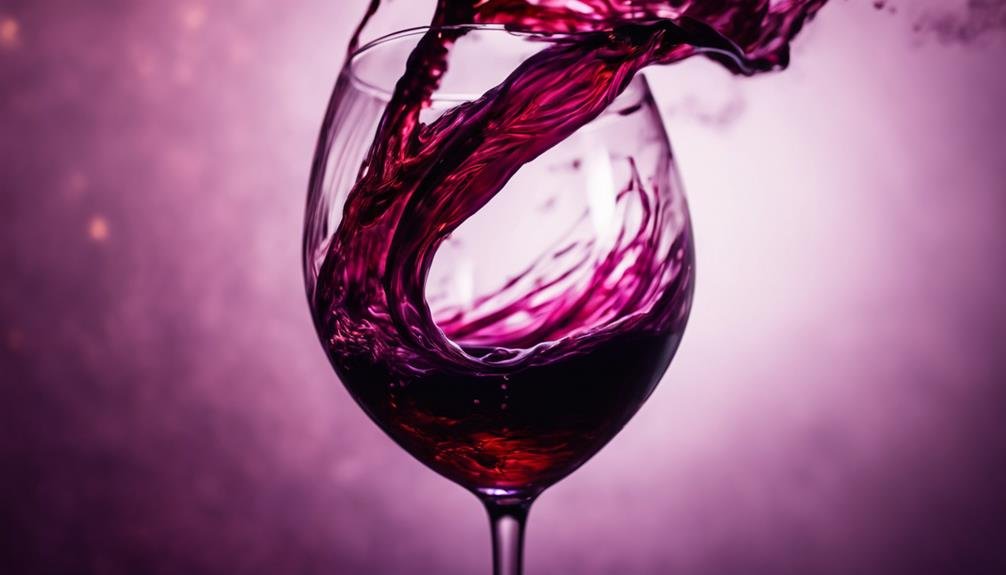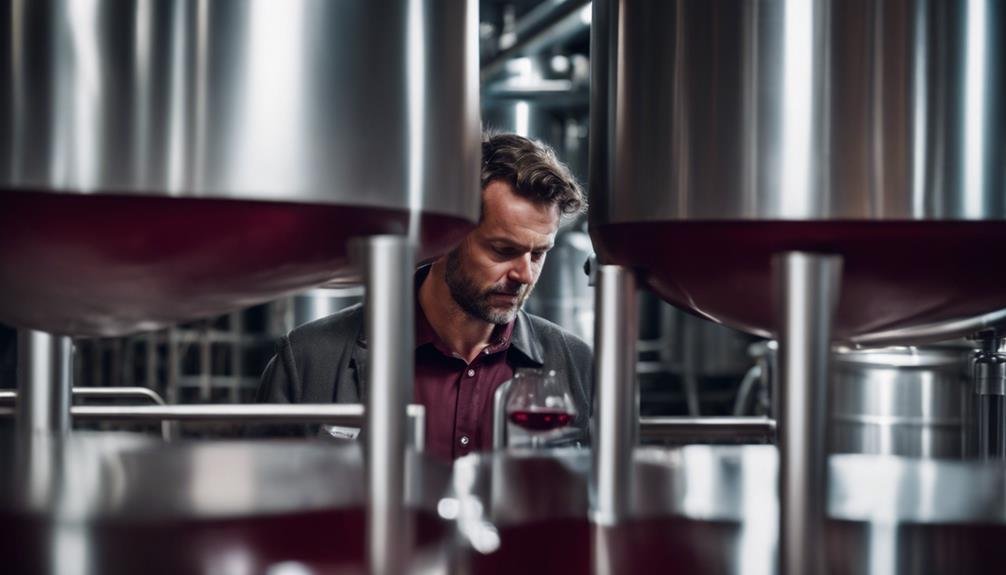Extended maceration is a technique in winemaking that enhances flavor, color, aroma complexity, and aging potential. It involves a meticulous balance of time and technique to extract tannins, develop flavors, and create vibrant wines. Winemakers use specific temperature controls, prolonged skin contact, and other methods to achieve superior color extraction and aroma richness. The impact on wine aging includes enhanced complexity, flavor evolution, and long-term aging ability. Through extended maceration, winemakers can craft dynamic and colorful creations that captivate the senses with their depth and character. Find out more about this transformative process and its myriad benefits.
Benefits of Extended Maceration
Extended maceration in winemaking offers a plethora of benefits that enhance the overall quality and complexity of wines. This technique allows for enhanced flavor development and tannin enhancement, resulting in richer and more supple wines.
Additionally, extended maceration facilitates superior color extraction, intensifying the wine's hue and vibrancy. By prolonging the maceration period, winemakers can also achieve greater aroma complexity, adding layers of depth and nuance to the final product.
The careful manipulation of tannin levels through extended maceration not only improves the wine's immediate characteristics but also enhances its aging potential. Winemakers who employ this method often produce wines with smoother tannins, higher quality grape skin extraction, and a focus on maximizing overall wine quality.
Techniques for Extended Maceration
Utilizing specific temperature control methods during maceration plays a pivotal role in enhancing the quality and complexity of wines during the winemaking process.
Color extraction is an important aspect of extended maceration, where the interaction between grape skins and the fermenting wine leads to the extraction of pigments responsible for the wine's color intensity.
Additionally, techniques for tannin enhancement during extended maceration involve managing the contact between the grape skins and the wine post-fermentation, allowing for the extraction of tannins that contribute to the wine's structure and aging potential.
Impact on Wine Aging

The duration of maceration greatly influences the aging potential and overall development of wine. Extended maceration plays an important role in enhancing wine aging through various mechanisms:
- Enhanced Complexity: Prolonged maceration allows for greater extraction of compounds from grape skins, contributing to a more complex flavor profile.
- Flavor Evolution: Over time, the tannins and phenolic compounds extracted during extended maceration undergo chemical changes, leading to the evolution of flavors in the wine.
- Tannin Polymerization: Extended maceration promotes the bonding of tannins, resulting in smoother tannins and a more harmonious mouthfeel.
- Long-Term Aging Ability: Wines subjected to extended maceration tend to have improved aging potential, developing nuanced characteristics and increasing in complexity over time.
Winemakers Perspectives
Incorporating winemakers' insights sheds light on the nuanced approaches and considerations in the art of extended maceration in winemaking. Winemakers bring unique perspectives to the table, focusing on flavor enhancement through techniques like cold soaking and prolonged skin contact post-fermentation. Their expertise guides decisions on maceration duration, aiming to extract best flavors and tannins while minimizing bitterness.
Extended Maceration in Practice

Implementing extended maceration techniques in winemaking involves a meticulous balance of time and technique to enhance the wine's structure and flavor profile.
- Temperature Control: Maintaining consistent temperatures during maceration is essential for ideal flavor development.
- Flavor Development: Extended maceration allows for the extraction of complex flavors from the grape skins, enhancing the overall taste profile of the wine.
- Skin Contact: Prolonged contact between the grape skins and the wine during maceration leads to increased tannin extraction, contributing to the wine's structure and aging potential.
- Tannin Extraction: Careful management of tannin extraction during extended maceration is vital to achieve the desired balance of tannins in the final wine.
Frequently Asked Questions
How Does Extended Maceration Affect the Mouthfeel of Wines?
Extended maceration affects mouthfeel by enhancing tannin structure, resulting in a smoother texture. It intensifies flavor, creating a balanced profile in wines. The prolonged skin contact after fermentation enriches the wine, reducing bitterness and improving overall quality.
Can Extended Maceration Be Used for White Wines?
While extended maceration is traditionally associated with red wines to enhance color, flavor, and tannins, it can also be utilized for white wines. Extended maceration for whites can elevate flavor profiles, promote aging potential, enhance aroma development, and extract delicate tannins.
Does Extended Maceration Impact the Wines Acidity Levels?
Extended maceration can impact a wine's acidity balance, enhancing flavor complexity. The process promotes tannin extraction, contributing to the wine's aging potential. Careful management of extended maceration duration can influence these aspects, shaping the wine's final profile.
Are There Specific Grape Varieties Best Suited for Extended Maceration?
When considering extended maceration, certain grape varieties excel in revealing their full potential. Varieties like Nebbiolo and Cabernet Sauvignon are well-suited, showcasing enhanced tannin development for texture, while also enriching aromatics and complexity.
What Temperature Range Is Ideal for Extended Maceration Process?
Ideal temperatures for extended maceration process range between 75-85°F. Fermentation control is vital during this phase to optimize color extraction and tannin development. Maintaining consistent temperatures guarantees a balanced extraction of flavors and enhances wine quality.
Conclusion
In summary, Extended Maceration is a vital technique in winemaking, enhancing the color, flavor, and aging potential of wines. Through the meticulous process of prolonged contact between grape seeds, skins, and juice, vintners can craft complex and rich wines with supple textures.
For example, the renowned winemaker Barolo Nebbiolo has achieved exceptional depth and quality in their wines through Extended Maceration.
This method continues to shape the landscape of winemaking, producing vibrant and enthralling creations.